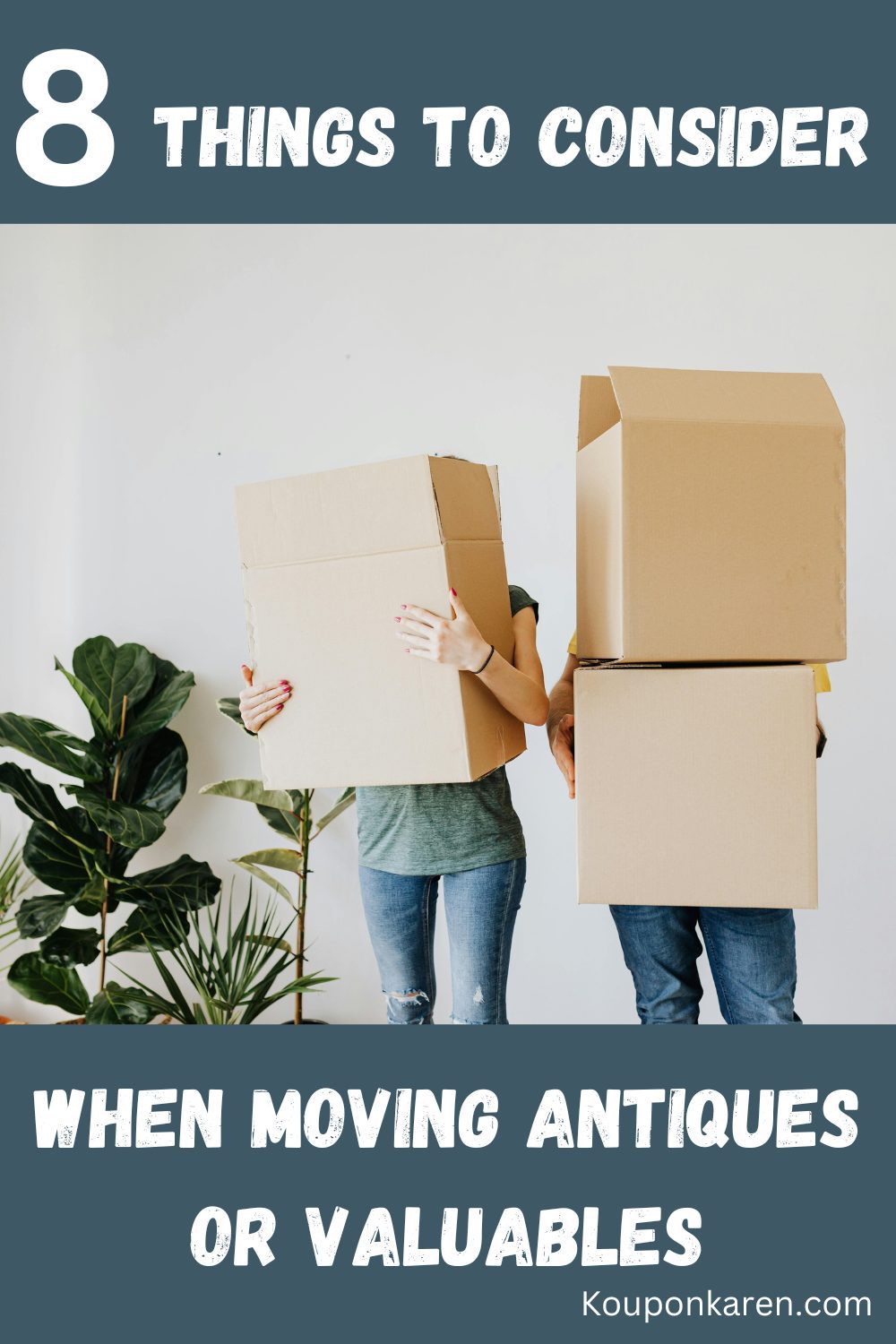When you’re moving, certain items in your stuff demand special attention—your antiques and valuables. These pieces aren’t just physical objects; they carry memories, history, and sometimes considerable financial value. The prospect of moving these can seem overwhelming, given their irreplaceability and the delicate care they require.
The key to a successful move lies in understanding the unique challenges these items present and taking deliberate steps to address them. From the moment you decide to relocate, ensuring the safety and security of these items should be a top priority.
This guide focuses on the crucial steps to protect your antiques and valuables during a move, laying out a strategic approach to confidently navigate this challenge.
1. Document and Evaluate
Begin with detailed documentation and evaluation of your antiques and valuables. Create a comprehensive inventory that includes photographs from different angles and notes on any existing damage or peculiarities. This documentation will be indispensable for insurance purposes and in the unfortunate event of a dispute over the condition of an item post-move.
Additionally, appraise your valuables if you haven’t done so recently. Market values can change, and you’ll want to ensure your insurance coverage is adequate for its current worth.
2. Selecting a Specialist Mover
When embarking on a move, especially with antiques and valuables in tow, selecting the right moving company becomes a critical decision. You should seek out a mover with specialized expertise in handling your items, one that assures safety and peace of mind throughout the transition.
The ideal partner is a team trained to appreciate and care for the unique needs of delicate and high-value possessions, treating each piece with the attention it rightfully deserves. If you’re not sure about who to hire, Blackhawk Moving & Storage is a company you can trust. Their team is trained to manage the nuances of moving delicate and high-value items, ensuring each piece is treated with the care it deserves.
3. Invest in High-Quality Packing Materials
The right packing materials are essential for protecting your antiques and valuables during the move. Opt for high-quality options such as acid-free paper, sturdy bubble wrap, and reinforced boxes. These materials offer superior protection compared to standard packing supplies, significantly reducing the risk of damage. While the cost may be higher, the investment is worth it to ensure the safety of your most precious items.
Your moving company can provide recommendations on the best materials for your specific needs, ensuring each item is well-protected.
4. Consider Custom Crating
Custom crating is a wise choice for items of exceptional value or fragility. A custom-built crate provides tailored protection that standard boxes cannot match, designed to fit the exact dimensions of your item. This not only guards against physical damage but also offers a level of security during handling and transport. Though custom crating involves an additional expense, the cost is negligible when compared to the potential loss or damage of a valuable antique.
Your moving company can assist in arranging custom crating solutions, ensuring your valuables are afforded the best possible protection.
5. Review Insurance Options
When moving items of significant value, the basic liability insurance offered by moving companies often falls short. These policies typically cover only a fraction of an item’s worth, leaving you unprotected. To bridge this gap, thoroughly review your insurance options. Many companies offer enhanced insurance packages or will work with third-party insurers to provide full-value protection plans tailored to your needs.
This additional coverage is especially crucial for antiques and valuables, where the cost of replacement or restoration can be exorbitant. Investing in comprehensive insurance ensures that, in the rare event of damage or loss, you’re adequately compensated, offering peace of mind throughout your move.
6. Plan for Climate Control
Certain valuables demand specific environmental conditions to preserve their integrity. Fine art, for instance, can suffer from exposure to excessive heat or cold, while vintage wine may be ruined by humidity fluctuations. As such, it’s vital to ensure that your moving company offers climate-controlled transport and storage options.
These specialized vehicles and facilities maintain a stable environment, protecting sensitive items from the adverse effects of temperature changes and humidity. When selecting a moving service, confirm their ability to provide these conditions, safeguarding your most delicate possessions during transit and storage.
7. Secure Storage Solutions
Not all moves are direct, and there may be times when your belongings need to be stored temporarily. This scenario requires secure, climate-controlled storage solutions to protect your antiques and valuables from environmental threats and potential security risks.
Before selecting a moving company, verify their storage capabilities or partnerships with reputable storage facilities. Look for features such as 24/7 surveillance, controlled access, and, as mentioned, climate control. These elements ensure that your items are not only safe from theft or vandalism but also from damage due to environmental conditions, providing a secure haven for your valuables until they can be safely moved to your new home.
8. Detailed Inventory and Labeling
A meticulous inventory and clear labeling system are indispensable tools in the moving process, especially when dealing with antiques and valuables. Documenting each item, including descriptions, conditions, and photographs, creates a valuable record that aids in organization, tracking, and, if necessary, insurance claims. Equally important is the labeling of packing containers with detailed handling instructions.
This clarity ensures that movers are aware of the contents fragility and value, promoting careful handling and proper placement during transit and storage. A detailed inventory also streamlines the unpacking process, allowing for a smooth transition into your new space.
Conclusion
Moving antiques and valuables extends beyond mere physical relocation; it involves preserving the history, sentiment, and value inherent in each piece. This complex process demands meticulous planning, the employment of suitable materials and methods, and the selection of a moving company with the expertise to meet these unique challenges.
By adhering to these essential considerations, you can navigate the intricacies of moving high-value items with confidence. With the right approach and partner, you can look forward to your new beginning, knowing your cherished belongings are safeguarded throughout the journey.





